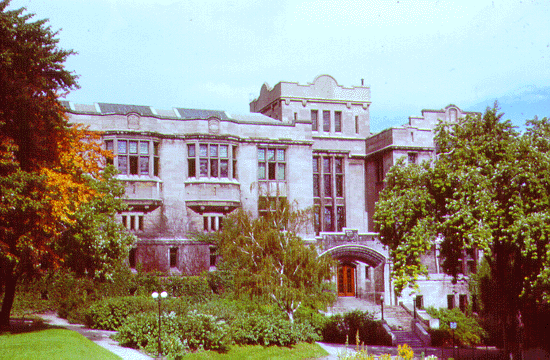
CYRIL PERCY MARTIN - BIOGRAPHY
Cecil Percy Martin was born on May 9, 1892 in Dublin, Ireland, the second youngest of the nine children of Thomas Stanhope Martin and his wife, Eliza (nee Mitchell). Two of his brothers died before he was born and shortly after his birth, his oldest sister died of pulmonary tuberculosis. When he was twelve years old another of his brothers died of renal tuberculosis.
His parents spent a considerable sum of money on educating the two oldest sons, who both became doctors, but they did not consider it important to do more than hire a governess and occasionally a clergyman to give the three youngest children a rudimentary education.
Following his father's retirement in 1910 from the Bank of Ireland, the family moved from Dundrum, a suburb of Dublin, to a large farm in County Wicklow and C.P. Martin (then aged about 18) and his younger brother Reginald, helped with running the farm. However, after about three years he realised that he needed to further his education and returned to Dublin to attend Ross's Tutorial College. The family with whom he boarded were very keen on elocution and gave him lessons which had a lasting influence as he became a very popular speaker, continuing well into his 70's.
Placing first in the exams at Ross's Tutorial College, he won a scholarship to the Royal Irish Constabulary where, after a year of training, he was posted to County Limerick as a District Inspector. Finding this work very dull, he applied to join the army and was transferred to the Royal Irish Regiment as a Lieutenant in Dublin where he was involved in guarding prisoners of the Easter Rebellion of 1916. As an Irishman, he had very mixed feelings in that his role as a soldier conflicted with his personal sympathies, which were for some sort of local self-government in Ireland.
About this time, he married Kathleen Humphries and a month later went overseas to Mesopotamia to serve in the expeditionary force of Sir Henry Maude. Early in 1918, he was wounded in the back of the head and was sent back to England in the summer of 1918 and discharged with an 80% disability pension because of visual impairment and epilepsy as a result of his injuries. He managed to get reinstated in the R.I.C. as a secretary in the finance department but this was a period of great anxiety for him and his wife as his work in Dublin Castle made him a potential target of Sinn Fein. With the Treaty of 1921, he and his wife went to London for a year where he was responsible for winding up the affairs of the old Irish Office and dealing with claims against the British government.
Not wanting to be sent to any more trouble spots (Palestine and Shanghai being the two options he was given), he settled for a sum of money and his pension and, in 1924, entered Trinity College, Dublin, and graduated with a gold medal in both natural sciences and medicine in 1928. He became a Scholar of the House and a Lecturer in Anatomy at Trinity College. His research interest in prehistoric man in Ireland resulted in a book of the same title for which he received his D.Sc. degree.

Strathcona Medical Building, McGill University, Montreal. Courtesy McGill University Archives.
In 1936, he came to Canada as Robert Reford Professor of Anatomy at McGill University, a position he held until 1957. He continued to teach anatomy on a part time basis until 1962 when he was named Emeritus Professor, receiving a standing ovation from that year's graduating class of doctors. His influence on 25 years of medical students is incalculable but can be summed up in a recurring remark made by many at the mention of his name: "You will never know how kind he was and how helpful he was to me as a student."
He was a devout Christian from a family of devout Christians who belonged to the Walkerites, a small sect similar in organization to the Plymouth Brethren but theologically closer to the Sandemanians. However, his family did not share the rigid views of the latter and mixed quite freely with their non-Walkerite friends. Later in life Dr. Martin attended a Presbyterian church, although he always eschewed denominational labels.
An extremely widely-read man, Dr. Martin particularly appreciated English Literature and loved and read the Bible regularly. He had a photographic memory and could quote extensively both from Shakespeare and the Bible. He also continued his scientific interests in Canada, publishing several scientific papers and three books. One was called "The Decline of Religion" and another "Sex, Psychology and Evolution", which he regarded as his magnum opus. He had always been very critical of the Darwinian view of evolution and a staunch supporter of the Lamarckian view, which somewhat unusual and unpopular position brought him criticism from his scientific colleagues.
During the Second World War, he bought a farm in Lachute, Quebec, and in his later years his main interests were painting, gardening and carpentry.
Dr. and Mrs. Martin had four children, two sons and two daughters, and it is his son John (himself now a retired Professor of Medicine at Memorial University in Newfoundland) who provided the material from which this brief biography is drawn.